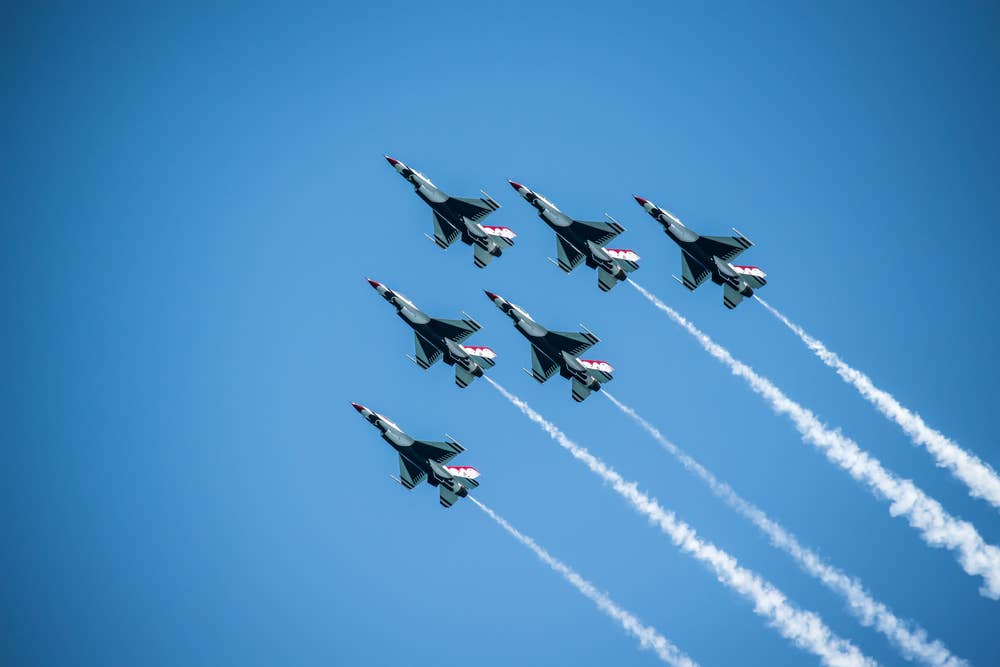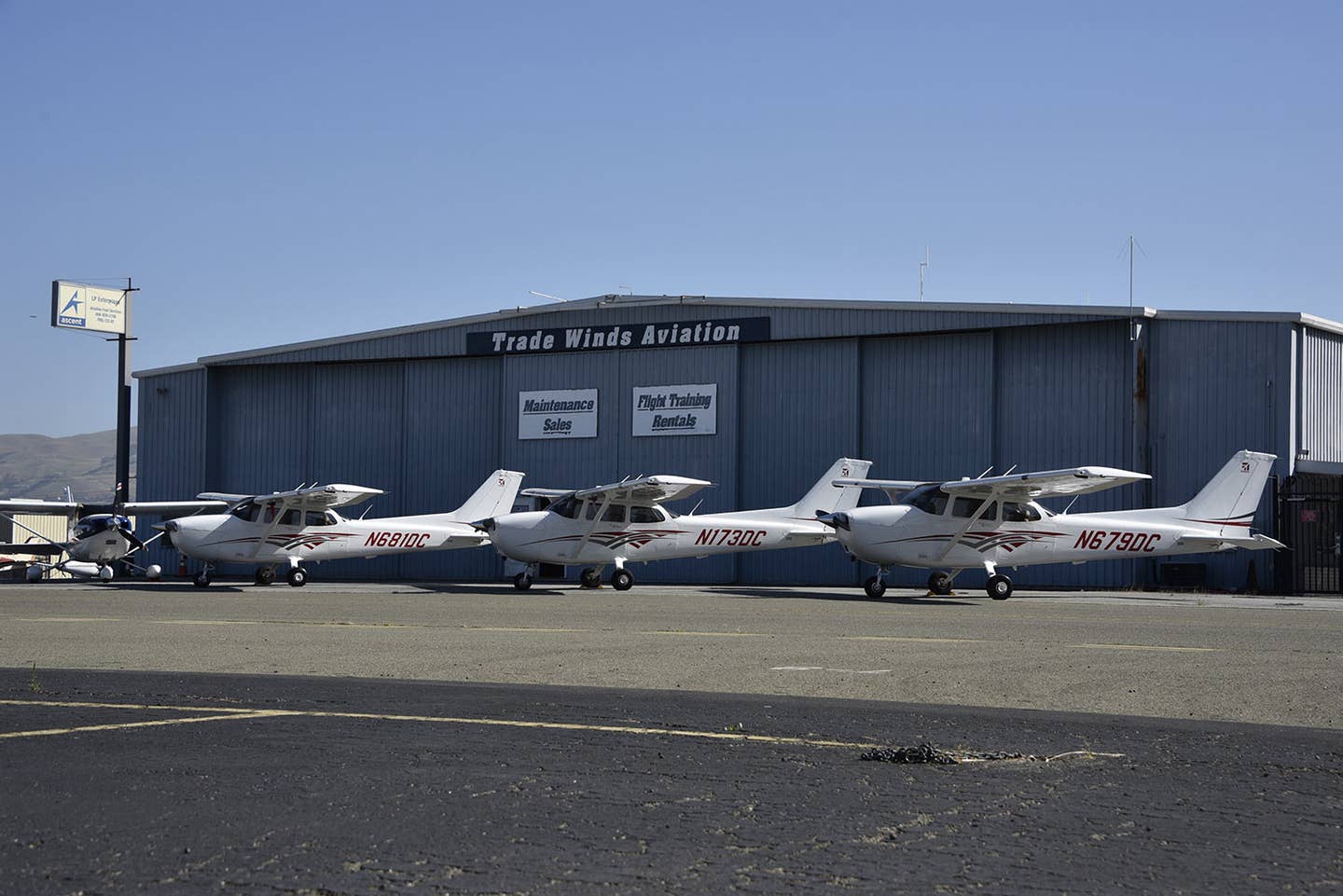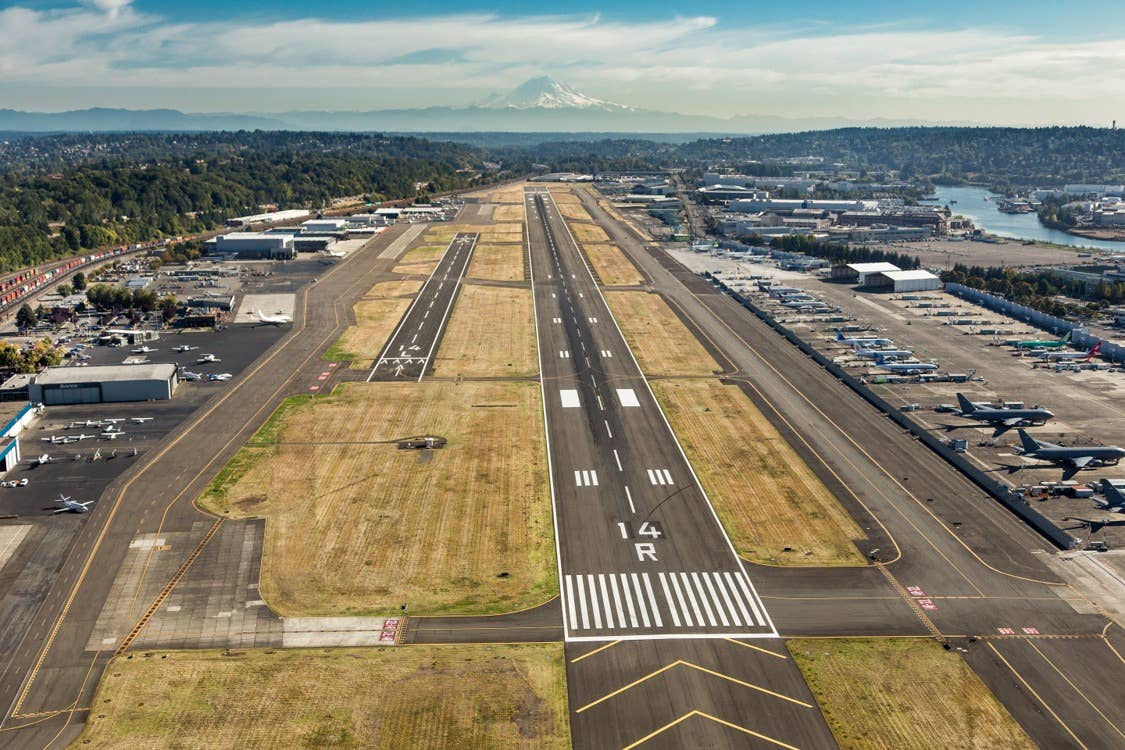Ever Landed at an Air Force Base? Visit One with a Fly-In Aviation Museum
It is possible to fly to on-base air museums after filing for permission.

The U.S. Air Force Thunderbirds demonstration team. [Credit: Shutterstock]
Three-quarters of a century is a timespan long enough to cause people to lose track of events and when they happened. As we consider this year’s 75th anniversary of the U.S. Air Force it might be easy to recall that the Air Force became a distinct military service in 1947, when it was no longer part of the Army.
However, remembering and placing the notable airplanes, people, and events along the service’s timeline can be difficult. Chuck Yeager broke the so-called sound barrier but when did the first supersonic fighters enter regular service with Air Force squadrons? Did the McDonnell F-4 Phantom II make its first flight in 1958 or ’59? How many different aircraft models have the Thunderbirds used in their aerobatic demonstrations?
Fly-In Aviation Museums
Pilots and other aviation fans seeking answers to these questions and many more might want the immersive experience of visiting a good Air Force museum. Many of those are located on Air Force bases. Can you think of a more appropriate way to mark this major birthday than by flying to one of these museums in a general aviation aircraft?
Doing so can be thrilling, but will require planning—lots of it. It is a good idea to start a month or so ahead of time to make sure you get all of the necessary paperwork in order. Bases typically require visitor passes for civilians coming through the gates. Getting your aircraft safely and legally onto the ramp requires a Civil Aircraft Landing Permit, or DD Form 2401. On the form, pilots must provide personal and aircraft information, and explain why they want to land on the base. Officials can turn down your request. But would they do that to a pilot who wants to look at historically significant aircraft?
The following are a few museums with impressive collections of Air Force hardware, located on or near Air Force bases.
Robins Air Force Base (KWRB)
Museum of Aviation
Warner Robins, Georgia
One of those legendary, retired SR-71 spy planes wound up here. So did many other interesting Air Force machines that you don’t see every day, like the Convair F102A Delta Dagger, Douglas VB-26B Invader, North American P-51H Mustang, and Martin B-57B Canberra. The museum also offers tours and hosts birthday parties.
Eglin Air Force Base (KVPS)
Air Force Armament Museum
Fort Walton, Florida
A broad range of aircraft, from piston and jet fighters and bombers to observation airplanes and helicopters add to the diversity of this collection, which also includes weapons, munitions, and other artifacts. Boeing’s B-47 Stratojet and B-52 Stratofortress are here as well as lesser-known models like the Northrop F-89D Scorpion all-weather interceptor and McDonnell F-101B Voodoo.
Travis Air Force Base (KSUU)
Travis Air Force Base Aviation Museum
Fairfield, California
There are plenty of fighters and bombers in this museum’s collection, but the number of transport aircraft on hand is especially notable. Rarely do you see a Douglas C-54 Skymaster and its improved version, the C-118 Liftmaster, in one place. The same goes for the C-7A Caribou and the C-124K Provider. Other rare birds include a Cessna AT-17 Bobcat, sometimes called the Bamboo Bomber, and a C-119G Flying Boxcar.
Ellsworth Air Force Base (KRCA)
South Dakota Air & Space Museum
Rapid City, South Dakota
This self-described “major national repository of Air Force airplanes” got its start in 1942 as Rapid City Army Air Base, a training field for crews of Boeing B-17 Flying Fortress bombers. After World War II, the base transitioned to Air Force use as home to B-29 Superfortress units. Today, the museum’s collection includes a B-29, B-52D Stratofortress, B-1B Lancer, FB-111A Aardvark, T-33 Shooting Star, and dozens more.
Barksdale Air Force Base (KBAD)
Global Power Museum
Bossier City, Louisiana
This base’s history dates to the early 1930s, when military aviation technology was developing rapidly. It was named for Eugene Hoy Barksdale, a World War I aviator and test pilot who died in 1926 while spin-testing a Douglas O-2 observation aircraft. The museum focuses on the history of strategic bombing and is home to the 2d Bomb Wing, the oldest bomb wing in the Air Force. The unit took part in Gen. Billy Mitchell’s historic 1921 test of aerial bombing against ships.

Sign-up for newsletters & special offers!
Get the latest FLYING stories & special offers delivered directly to your inbox






